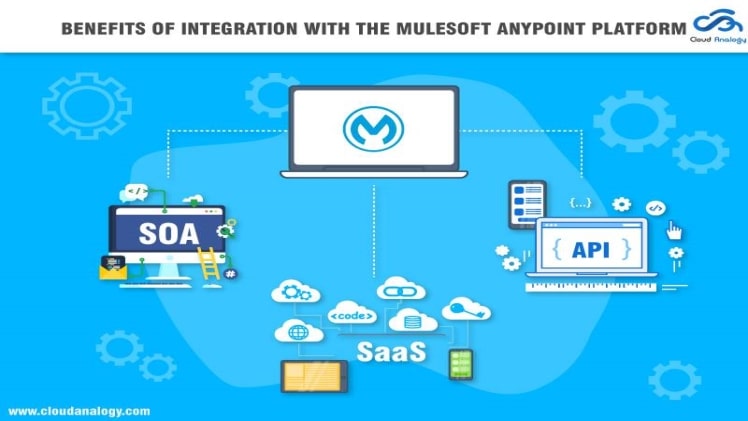In recent years, the entire world has been affected and is still suffering from the effects of the COVID-19 epidemic. We’ve heard in the media and social networks of the need for businesses or organizations to tackle what is referred to as the “digital transformation. This concept isn’t anything but a new concept, thanks to the proliferation -among other factors- of mobile technology, cloud technology, social media, Big Data and analytics, the Internet of Things (IoT), and many more.
This means that companies must be prepared for these future and present challenges to take them on in a rapid and flexible manner:
- Growing IT effectiveness in operations.
- It is a way to improve the efficiency of your business.
- Enhancing the customer experience.
- Launching new services and products more quickly.
- Improve the experience of employees.
- Improve the user experience of partners.
What exactly is Mulesoft?
MuleSoft is a world-class company for integration software, which was purchased from Salesforce in March 2018 for $6.5 billion. The company provides solutions for integration across systems.
Its flagship product is Anypoint Platform, a complete Integration Platform-as-a-Service (iPaaS) solution for the connectivity managed by API that allows companies to create networks of data applications and devices, both on their premises and in the cloud. Additionally, it facilitates the integration of any software (CRM, SAP, SAS, etc.) using a systematic approach called API-Led Connectivity. Join MuleSoft training online and learn more about it.
API-Led Connectivity
It’s a method to connect data, applications, and devices using an API instead of point-to-point integrations.
The principal objective of this approach is to enable integrated flows that can be reused and used again by a variety of participants within the platform for integration. Through this recycling of the logic already in place (implemented through flows), developers can apply their own logic in a more secure and faster manner, which leads to a quicker period of time from conception to commercialization.
This means that APIs are built in layers, which means different from the E2E method, greater elements (flows) are reusable, which facilitates the creation of new applications and systems.
Anypoint Platform
It is a hybrid integration platform, based on the API-Led Connectivity method, which allows:
- The connection between any application device, data, or application.
- The connection and disconnection of apps are not a problem for other users.
- Create, deploy, manage and make sure APIs are secure.
- Business processes automation.
- Recycling APIs that are already in use to create new APIs that are more complicated and complete. APIs that allow consumers from different business sectors to access, explore and utilize these assets.
All of these steps are carried out by means and development of Networks Application, which aims to design and develop innovative products with greater efficiency and, thus, take on the digital change.
Application Networks
An application network is a method to connect apps, data, and devices using an API that shows the majority or even all data and assets online. The development of an API network is the creation of reusable assets, which then allow users of businesses to reuse their assets and to have access to those assets. They are then able to be used and reused in a variety of ways within an organization. In the same way, new connections can be created between these assets as well as through APIs since it is the most effective abstraction of information exchange among two different entities (information exchange between applications).
Not only are there resources that can be reused and utilized across the company to develop and launch new products with greater efficiency. There are teams that can help development teams understand the best practices to create new services and products, which is to help them navigate to a library of services that can be reused.
Everything published in the application network is tracked, managed, and secured. The central IT department is responsible for the responsibility of governing and managing all of the services and permits teams working on development from the business lines to use the services for any project in which they are essential. Anyone who develops new products and services within the organization is able to use these assets as they are, or they may take just one basic component, combine it, and then publish a brand new component. Thus, the possibility exists for several teams to make use of the assets that were previously created. For more check out this MuleSoft tutorial for beginners today.
A network of applications is not an architectural concept but the elements on which architectures are possible to be constructed. Its federated and managed nature allows it to bend and not break. The latest products and services are able to be seamlessly linked and disengaged using technologies like the ones that are offered through Mulesoft, enabling you to attain the agility and flexibility every company needs to continue taking on and addressing the increasing demands of digital innovation.

